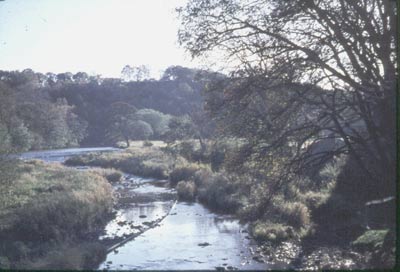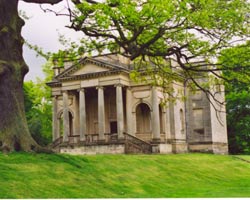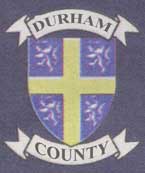
ROWLANDS GILL TO ALLENSFORD

"There are views northwards into Northumberland, (from the Derwent Walk railway path) where the Whittonstall area has suffered from opencast mining like vast areas of Durham County, yet the recovery is surprising and the Derwent is a most attractive valley in these parts.
Waters Of Tyne. T H Rowland. 1991.
This section of the river is essentially rural, although until the late 20th century a large iron and steel works dominated the hillside less than two miles above the Derwent at the town of Consett. At nearby Shotley Bridge swordmaking was established by Germans from Solingen in the 17th century, initially making use of the local iron deposits and also of the rapid waters of the River Derwent.
There were also paper mills along the river using its water power and coal mines and brick-making were other prominent local industries. However, at present the Derwent is untroubled by the presence of any industry, and green fields and woods line its banks as it flows west from Lintzford, turning southwest at Hamsterley and continuing to the major crossing point at Allensford where one of the main roads to Scotland bridges its waters. There are several other bridges on this six-mile stretch of river, mostly quite old, and the main road is never far away, though the old railway took the higher ground to the south, constantly climbing to eventually reach Blackhill and Consett, high up on the hill.
- Lintzford Mill Bridge - 18th Century
- Lintzford Old Road Bridge - 1835
- Lintzford New Road Bridge - 19??
- Blackhall Mill Bridge - 2001?
- Ebchester New Bridge - 1973
- Ebchester Old Bridge - 1862
- Shotley Bridge - 18th century
- Shotley Bridge Footbridge 1 East - not known
- Shotley Bridge Footbridge 2 West - not known
- Allensford Bridge -1925

